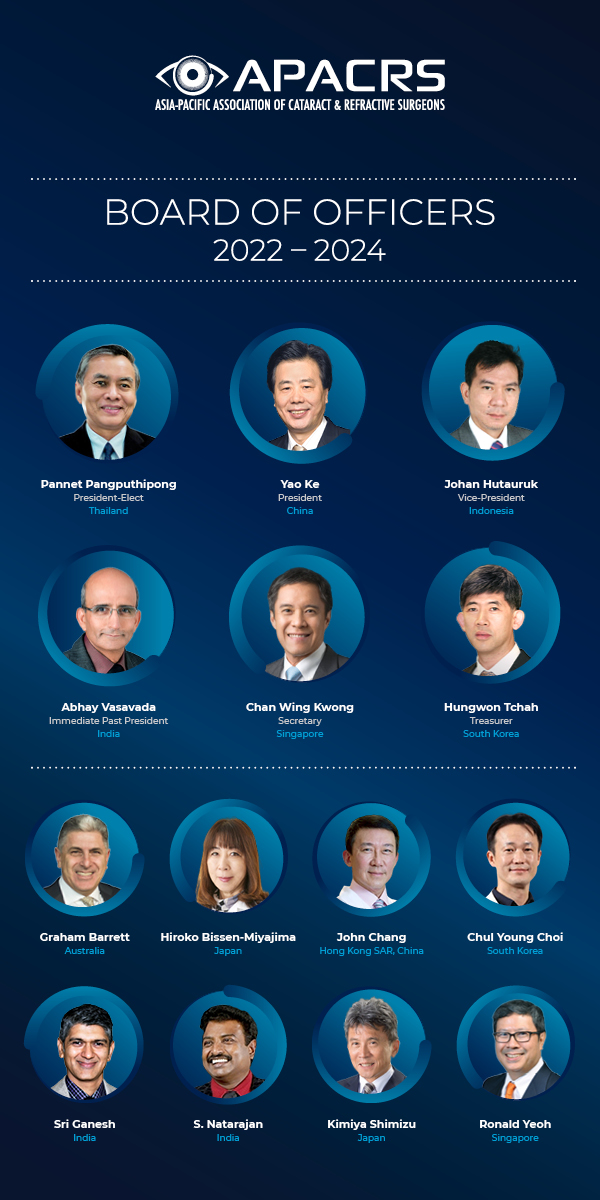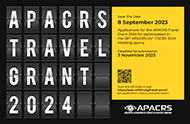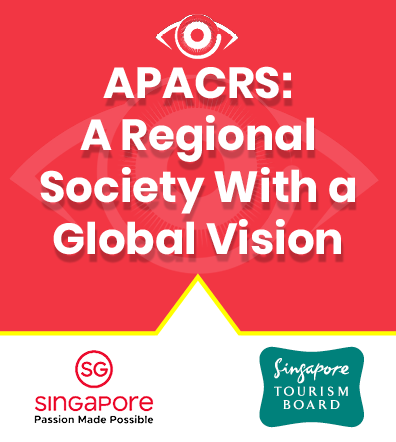Eyeworld Weekly Update |
Volume 20, Number 8 |
20 February 2015 |
- In memoriam: Richard Kratz, MD
- Navilas laser granted FDA clearance
- Generic glaucoma drugs shown to improve compliance
- Vision problems affect quality of work
- Rhopressa may have second disease-modifying MOA
- Eylea outperforms other drugs for DME with moderate or worse vision loss
- Actavis to take Allergan name
- Dailies Total1 show lengthy lubricity, low silicon
In memoriam: Richard Kratz, MD
Richard P. Kratz, MD, a former ASCRS Honored Guest and ASCRS Hall of Fame member, passed away earlier this week. Dr. Kratz was a member of 15 ophthalmological societies and is a founding member of ASCRS, the Contact Lens Association of Ophthalmologists, the Joint Commission on Allied Personnel in Ophthalmology, and the National Ophthalmological Society.
According to ASCRS, Dr. Kratz is best known for developing, teaching, and defending phacoemulsification against Medicare, the U.S. Food and Drug Administration, and some of the senior academic ophthalmologists.Navilas laser granted FDA clearance
The Food and Drug Administration (FDA) has granted regulatory approval for the Navilas 577+ ophthalmic laser system, according to developer OD-OS (Irvine, Calif.). The system is a retinal photocoagulator integrated with a digital fundus camera. It is indicated for use in retinal photocoagulation for the treatment of clinically significant diabetic macular edema (focal or grid laser), proliferative diabetic retinopathy (panretinal photocoagulation), subretinal choroidal neovascularization (focal laser), retinal vein occlusion, lattice degeneration, and retinal tears and detachments. It is also approved for imaging of the retina, including color, fluorescein angiography and infrared imaging, and for aiding in the diagnosis and treatment of ocular pathology in the posterior segment of the eye, OD-OS said.
Generic glaucoma drugs shown to improve compliance
The first study to examine the impact of a reduction in glaucoma medication copay on patient adherence found that while more than half of glaucoma patients do not take their medications as prescribed, one way to solve this problem may be switching nonadherent patients to generic drugs, according to the American Academy of Ophthalmology (AAO, San Francisco).
Researchers with the University of Michigan Medical School and University of Michigan College of Pharmacy examined claims data from 8,427 glaucoma patients for the 18 months before and after latanoprost became available. All subjects were taking name brand prostaglandin analogues (PGAs) prior to the availability of generic latanoprost, but after the generic drug's introduction, some stayed on the name brand medications while others shifted to the generic drug.
Vision problems affect quality of work
Nine out of 10 employees say that the quality of their work has been negatively impacted by problems with their vision, and more alarming, half admit that this is a regular occurrence, according to results from the 2015 annual Employee Perceptions of Vision Benefits survey, supported by Transitions Optical Inc. (Pinellas Park, Fla.). The survey, which explored top visual complaints in the workplace, revealed that both indoor and outdoor light are largely to blame, with 60% saying they are bothered by light at work, and 90% admit visual disturbances are negatively impacting their quality of work.
The most common vision problems reported by employees in the 2015 survey included tired eyes (40%); dry eyes (31%); headaches (27%); and blurry vision (21%). Light was the top complaint, with employees saying they are bothered by a wide range of disturbances including bright, glaring light and light reflected off of a computer screen, personal device, or other surfaces. In total, 56% of employees said that light bothers them at work, with the majority of employees saying they are affected primarily by light outdoors or a combination of light indoors and outdoors.Rhopressa may have second disease-modifying MOA
Rhopressa may block the effect of fibrosis-promoting proteins on cells of the trabecular meshwork, a tissue that helps maintain normal pressure in the eye, developer Aerie Pharmaceuticals (Irvine, Calif.) said in a press release about data presented at a recent conference. Specifically, the research found that Rhopressa (a Rho-kinase and norepinephrine transporter inhibitor) suppressed the activity of profibrotic proteins, TGF-beta 2 and CTGF, on human trabecular meshwork cells in an in vitro model. This is "the first study to show that Rhopressa, a novel once-daily, triple-action eye drop that lowers IOP in glaucoma patients, has the potential to modify the course of the disease by arresting fibrosis," Aerie said.
Eylea outperforms other drugs for DME with moderate or worse vision loss
In a National Eye Institute (NEI)-supported clinical trial comparing 3 drugs for diabetic macular edema (DME), Eylea (aflibercept, Regeneron, Tarrytown, N.Y.) provided greater visual improvement, on average, than did Avastin (bevacizumab, Genentech, South San Francisco) or Lucentis (ranibizumab, Genentech) when vision was 20/50 or worse at the start of the trial. However, the 3 drugs resulted in similar average improvement when starting vision was 20/40 to 20/32. Investigators found no major differences in the safety of the 3 drugs, the NEI noted on its website.
Actavis to take Allergan name
Following the acquisition of Irvine, Calif.-based Allergan, Actavis (Dublin, Ireland) will become Allergan; the company will retain its own name for select geographic regions and products, Actavis said.
Dailies Total1 show lengthy lubricity, low silicon
Two separate studies on Dailies Total1 (Alcon, Fort Worth, Texas) indicated after 16 hours of lens wear, the lenses were shown to have equivalent lubricity to unworn contact lenses. The second study showed the lenses have the lowest concentration of silicon at the outermost lens surface (less than 1%), which may influence improved wettability over other lens materials, the company said in a press release.
RESEARCH BRIEFS
- Resolution of endophthalmitis in patients with previous glaucoma surgery allowed for IOP control in only 25% of cases, according to R.J. Mady and colleagues. This was a retrospective case series of 12 patients with previous glaucoma surgery who presented with infectious endophthalmitis between 1995 and 2006. IOP control failure was stratified into 2 groups: IOP of ≥22 mm Hg and IOP ≥16 mm Hg at 3 consecutive follow-up visits. Of the 12 patients, 8 had undergone trabeculectomies and 4 had undergone bleb revision. Mean follow-up time was 43.7 months (range, 10 to 98 mo). Of 12 patients, 9 (75%) failed, 2 (17%) consistently maintained IOP <22 mm Hg, and 1 (8%) maintained IOP <16 mm Hg during the follow-up period. Median survival time was 9.25 months. Age of the subject 65 years and older (P=0.0002) was associated with increased risk of IOP failure, whereas initial treatment selection with vitrectomy was not. The study is published in the Journal of Glaucoma.
- Using an optical coherence tomography (OCT) device may help correlate clinical signs and subjective symptoms in patients with dry eye syndrome (DES), according to a study. D. Schmidl and colleagues assessed 52 patients with DES. For assessment of symptoms, the Ocular Surface Disease Index (OSDI) was used. Clinical parameters included measurement of tear break-up time (BUT), corneal fluorescein staining, tear osmolarity, and ocular scattering index (OSI). Tear film thickness (TFT) was assessed using a custom-built OCT system with an axial resolution of 1.2 μm. The mean OSDI in the present study population was 28.9±17.6, the mean TFT was 4.1±1.3 μm. TFT correlated positively with BUT, but with no other signs of DES. No association was found between OSDI and the other evaluated signs. The study is published in Investigative Ophthalmology & Visual Science.
- Factors that were significantly correlated with flap thickness included the precutting central corneal thickness (CCT), whether the right or the left eye, the microkeratome head used, the surgeon performing the procedure, and the preoperative sphere, according to Michael Mimouni, MD, and colleagues. This retrospective comparative study evaluated 6,242 eyes of 3,121 patients in which bilateral LASIK was performed between 2005 and 2012 using an SBK-90 microkeratome head (Group 1) or an M2-90 microkeratome head (Group 2). Group 1 comprised 2,560 eyes (41%), and Group 2 comprised 3,682 eyes (59%). The eyes in Group 1 had thinner flaps (P<.001). The right eyes had thicker flaps (P<.001). Flap thickness had a positive correlation with precutting CCT and operating room humidity and a negative correlation with patient age, preoperative sphere and cylinder, and operating room temperature. Statistically significant differences were found in flap thickness between surgeons (P<.001). Larger suction rings created thicker flaps (P<.001). Stepwise regression models accounted for up to 28.1% of the variation in flap thickness. The study is published in the Journal of Cataract & Refractive Surgery.
 Licensed Publications |
Licensed through ASCRS American Society of Cataract and Refractive Surgery, 4000 Legato Road, Suite 700, Fairfax, VA 22033-4003, USA.
All rights reserved. The ideas and opinions expressed in EyeWorld Asia-Pacific Weekly News do not necessarily reflect those of the ASCRS�ASOA or APACRS. Mention of products or services does not constitute an endorsement by the ASCRS�ASOA or APACRS. Copyright 2008, EyeWorld News Service, a division of ASCRS Media. |




 EyeSustain Update
EyeSustain Update 2024 APACRS TRAVEL GRANT
2024 APACRS TRAVEL GRANT Digital EyeWorld
Digital EyeWorld VOL. 39 (2023), ISSUE 3
VOL. 39 (2023), ISSUE 3  Membership Information
Membership Information APACRS Principles of Preferred Practice
APACRS Principles of Preferred Practice